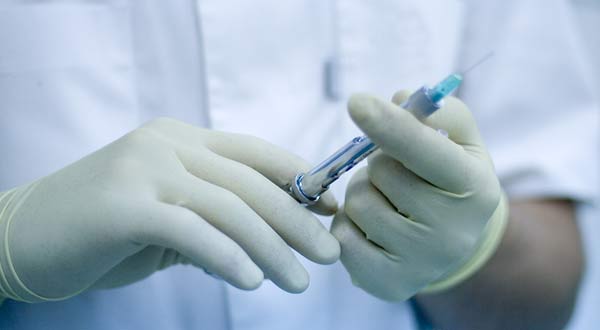HPV Vaccination Efforts Most Effective If Aimed at Girls, Study Suggests

The most effective way to reduce the spread of human papillomavirus (HPV) infections through a population is to aim public health efforts at vaccinating a very high percentage of either girls or boys against the disease, but not both, a new study suggests.
The study is based on a new mathematical model of HPV transmission.
Because many countries have started vaccinating girls against HPV, these countries should stick to vaccinating girls, said study researcher Johannes Bogaards, of the department of epidemiology and biostatistics at VU University Medical Center in Amsterdam. Only once most girls are vaccinated should efforts begin to vaccinate boys, and even then, only if there will be an added benefit to male vaccination, Bogaards said.
The findings counter a recent decision by a Centers for Disease Control and Prevention (CDC) panel, which recommended boys and girls receive the HPV vaccine.
However, other experts say it's premature to make a decision regarding vaccination policy based on one study, said Dr. Joseph Bocchini, professor and chairman of pediatrics at Louisiana State University. In addition, all models make assumptions, which may not necessarily hold up in the real world, Bocchini said.
The study is published this week in the journal PLoS Medicine.
Single-sex vaccination
Get the world’s most fascinating discoveries delivered straight to your inbox.
The HPV vaccine protects against the strains of the virus that are linked to cervical cancer and genital warts.
Bogaards and colleagues used a general model of the spread of sexually transmitted disease (STD) between heterosexual individuals to identify criteria that would influence the effect of STD vaccination. They then used a more elaborate model of HPV transmission to confirm their results.
The researchers found the most effective way to reduce HPV infections was to vaccinating a single sex. This is because, in the case of heterosexual transmission of the virus, vaccination of one sex also protects the other, Bogaards said.
If you have a limited amount of vaccine, vaccinating 100 percent of women and 0 percent of men will lead to a greater reduction in HPV infections than vaccinating 50 percent of women and 50 percent of men, Bogaards said.
In addition, in most cases, the best strategy is to vaccine the sex that has the highest prevalence of the disease. HPV is more prevalent in women because it causes longer and more persistent infections in women than in men, Bogaards said.
The researchers did conduct another analysis which assumed a small percentage of the population was men who have sex with men. Inclusion of men who have sex with men did not change the overall findings. However, men who have sex with men were not maximally protected from a vaccine policy that only targets women, Bogaards said.
Universal vaccination
In the opinion of Dr. Paul Offit, chief of the director of the Vaccine Education Center at the Children's Hospital of Philadelphia, a vaccination policy that targets both girls and boys is the best approach. One reason is that this policy can reach men who have sex with men, a group that is at particularly high risk of developing anal cancer, some cases of which can be prevented by HPV vaccination, Offit said.
In addition, vaccination policies that are aimed at only one group have historically not been effective, Offit said. For example, the hepatitis B vaccine was initially recommended only for certain high risks groups, but after 10 years, the incidence of hepatitis B infection was not changed, Offit said. In 1991, the policy changed to vaccinating all infants, and the disease is now virtually eliminated in young people, he said.
In October, the CDC's Advisory Committee on Immunization Practices recommended that boys as well as girls receive the HPV vaccine, in part because vaccination rates among women had been very low, said Bocchini, who was chair of the ACIP panel.
Researchers are currently monitoring the outcome of HPV vaccination, and if the strategy of vaccinating boys and girls appears to be effective in terms controlling the virus, Bocchini said the policy will likely stick.
Pass it on: HPV vaccination efforts should be focused on girls, a study suggests.
This story was provided by MyHealthNewsDaily, a sister site to LiveScience. Follow MyHealthNewsDaily staff writer Rachael Rettner on Twitter @RachaelRettner. Find us on Facebook.

Rachael is a Live Science contributor, and was a former channel editor and senior writer for Live Science between 2010 and 2022. She has a master's degree in journalism from New York University's Science, Health and Environmental Reporting Program. She also holds a B.S. in molecular biology and an M.S. in biology from the University of California, San Diego. Her work has appeared in Scienceline, The Washington Post and Scientific American.


